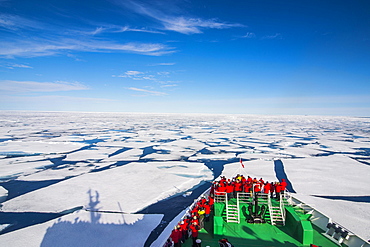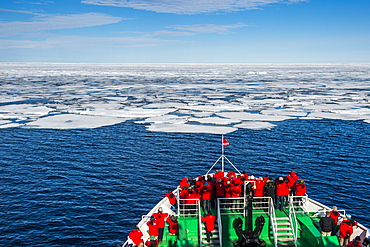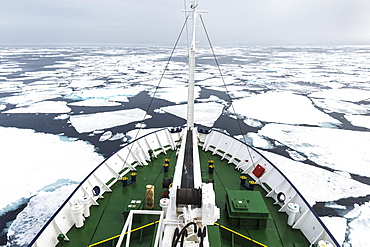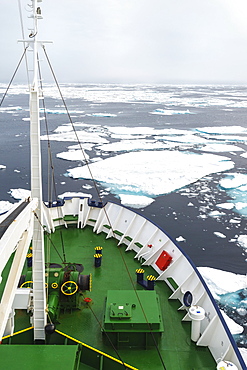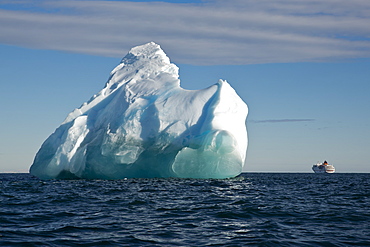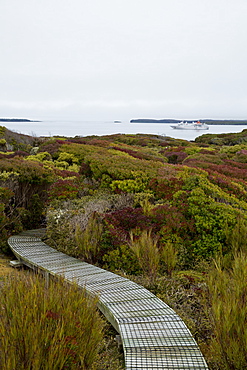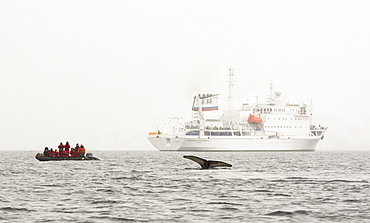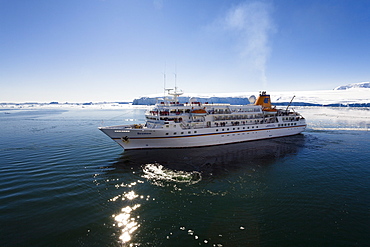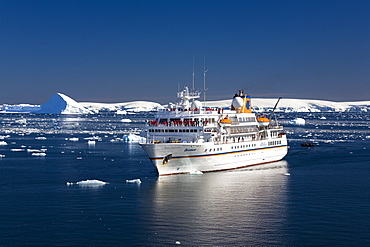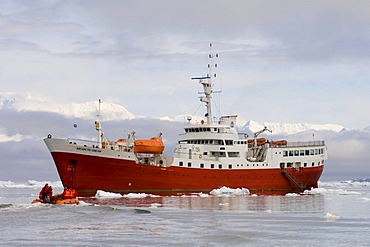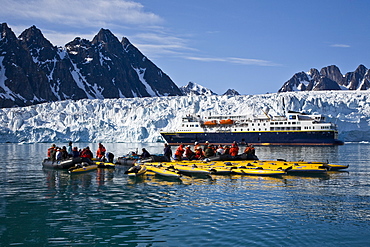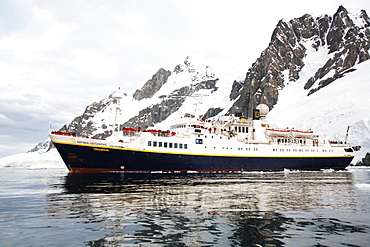Recent searches
Loading...
1113-106933 - Hand on accelerator of tender boat from expedition cruise ship World Explorer (nicko cruises), Punta del Este, Maldonado Department, Uruguay, South America
1113-107292 - Bow of the expedition cruise ship World Explorer (Nicko Cruises) in the South Atlantic, near Brazil, South America
1113-106924 - Deck at the bow of the expedition cruise ship World Explorer (Nicko Cruises) in the South Atlantic, near Brazil, South America
832-384587 - Barquentine Antigua at sunset, Kobbefjord, Spitsbergen archipelago, Svalbard and Jan Mayen, Norway, Europe
832-384709 - Expedition boat entering the Magdalenefjorden, Svalbard, Arctic, Norway, Europe
832-384751 - Barkentine Antigua in the snow drift, Snaddvika, Murchisonfjord, Nordaustland, Spitsbergen Archipelago, Svalbard and Jan Mayen, Norway, Europe
832-384750 - Barkentine Antigua in the snow drift, Snaddvika, Murchisonfjord, Nordaustland, Spitsbergen Archipelago, Svalbard and Jan Mayen, Norway, Europe
832-384528 - Expedition ship navigating through the pack ice in the Arctic, Svalbard, Norway, Europe
832-384527 - expedition ship in front of the pack ice, Arctic, Svalbard, Norway, Europe
1320-24 - Large iceberg and expedition ship against sea ice, Antarctica, Polar Regions
1131-1158 - Polar Bear (Ursus maritimus) inspecting and chewing on the pole of an expedition ship, Svalbard Archipelago, Arctic, Norway, Europe
1131-1165 - Polar Bear (Ursus maritimus) inspecting the pole of an expedition ship, Svalbard Archipelago, Arctic, Norway, Europe
1131-1160 - Curious Polar Bear (Ursus maritimus) swimming around an expedition ship and looking up, Svalbard Archipelago, Arctic, Norway, Europe
832-380490 - Expedition Boat navigating through melting pack ice, Arctic Ocean, 81° North and 26° East, Svalbard Archipelago, Norway, Europe
832-380489 - Expedition Boat navigating through melting pack ice, Arctic Ocean, 81° North and 26° East, Svalbard Archipelago, Norway, Europe
1167-1954 - Expedition cruise ship and passengers, tidewater glacier, South Skjoldungen Fjord, glorious weather, remote East Greenland, Denmark, Polar Regions
1167-1690 - Expedition ship passengers hiking, early morning, beautiful day, Neko Harbour, Graham Land, Antarctic Continent, Antarctica, Polar Regions
1167-1694 - Expedition ship passengers trek above the sea, early morning, sunny day, Neko Harbour, Andvord Bay, Graham Land, Antarctica, Polar Regions
1167-1675 - Damoy Hut, expedition ship visitor in the snow, Historic Monument, Dorian Bay, Wiencke Island, Antarctic Peninsula, Antarctica, Polar Regions
1167-1674 - Expedition ship visit, Damoy Hut, former British Air Transit Facility, Historic Monument, Dorian Bay, Wiencke Island, Antarctica, Polar Regions
1113-102118 - Iceberg in bright sunlight with expedition cruise ship MS Hanseatic (Hapag-Lloyd Cruises) in the background, Bird Point, Ross Is
1113-102119 - Boardwalk throgh native vegetation with expedition cruise ship MS Hanseatic (Hapag-Lloyd Cruises) in background, Enderby Island,
814-1600 - Australis expedition cruise ship anchored in front of Navarino island, Tierra del Fuego, Chile, South America
911-10762 - Passengers on Zodiaks off the Russian research vessel, AkademiK Sergey Vavilov an ice strengthened ship on an expedition cruise to Northern Svalbard in front of the Aalkefjellet (79 ̊ 36’n 18 ̊ 27’e) sea bird nesting cliffs, home to over 60,000 pairs of Brunnichs Guillemot, Hinlopenstretet Spitsbergen;
911-10812 - Humpback Whales (Megaptera novaeangliae) feeding on Krill in Wilhelmena Bay, Antarctic Peninsular. With passengers from an expedition crusie in Zodiaks. The whales migrate here in the summer to feed on the Krill. Krill numbers have declined by over 50%. They feed on algae that grows on the underside of sea ice, As the sea ice melts, both algae and krill decline.
911-10810 - Humpback Whales (Megaptera novaeangliae) feeding on Krill in Wilhelmena Bay, Antarctic Peninsular. The whales migrate here in the summer to feed on the Krill. Krill numbers have declined by over 50%. They feed on algae that grows on the underside of sea ice, As the sea ice melts, both algae and krill decline. An expedition cruise ship in the background
911-10665 - Sunrise over Antarctic expedition ships in the harbour of Ushuaia which is the capital of Tierra del Fuego, in Argentina, it is the most southerly city in the world and the starting point for trips to Antarctica.
911-10597 - Passengers on Zodiaks off the Russian research vessel, AkademiK Sergey Vavilov an ice strengthened ship on an expedition cruise to Northern Svalbard in front of a glacier.
911-10598 - The Russian research vessel, AkademiK Sergey Vavilov an ice strengthened ship on an expedition cruise to Northern Svalbard, with clients on the prow at over 80 degrees north in rotten sea ice, some 550 miles from the North Pole. Latest research shows the Arctic will be ice free in the summer by around 2054.
911-9993 - The Akademik Sergey Vavilov, an ice strengthened ship on an expedition cruise to Antarctica, in Paradise Bay in the Antarctic Peninsular, which is one of the fastest warming places on the planet.
911-9989 - Mountain peaks on Joinville Island just off the Antarctic Peninsularwith members from an expedition cruise ship. The peninsular is one of the fastest warming places on the planet.
911-9991 - The deck of the Akademik Sergey Vavilov, an ice strengthened ship on an expedition cruise to Antarctica, off the Antarctic Peninsular at the Gerlache Strait. The Antarctic Peninsular is one of the most rapidly warming places on the planet.
911-9995 - Emissions from the Akademik Sergey Vavilov, an ice strengthened ship on an expedition cruise to Antarctica, in Paradise Bay in the Antarctic Peninsular, which is one of the fastest warming places on the planet.
816-8007 - Expedition boat navigating through the pack ice in the Arctic shelf, Svalbard, Arctic
816-7996 - Expedition ship looking through the rocks of Alkhornet, Svalbard, Arctic
816-8002 - Expedition boat navigating through the pack ice in the Arctic shelf, Svalbard, Arctic
816-8054 - Expedition boat entering the Magdalenen Fjord, Svalbard, Arctic, Norway, Scandinavia, Europe
816-7999 - Expedition boat entering the pack ice in the Arctic shelf, Svalbard, Arctic
816-8052 - Kittiwakes sitting on a huge piece of glacier ice with an expedition boat in the background, Hornsund, Svalbard, Arctic, Norway, Scandinavia, Europe
917-574 - Chinstrap penguins (Pygoscelis antarcticus) porpoising in front of expedition ship, Half Moon Island, South Shetland Islands, Antarctica, Polar Regions
832-370502 - German research icebreaker Polarstern, operated by the Alfred Wegener Institute for Polar and Marine Research, Isfjorden, Spitsbergen, Svalbard, Norway, Europe
1112-1907 - Expeditions ship amongst huge icebergs, Ilulissat, Greenland, Polar Regions
1112-1906 - Expeditions ship amongst huge icebergs, Ilulissat, Greenland, Polar Regions
832-304555 - Bow, Fram ship at Fram Museum on Bygdoy Peninsula, Oslo, Norway, Scandinavia, Europe
832-304548 - Gjoa, first ship to transit the Northwest Passage in 1906, in front of the Fram Museum on Bygdoy Peninsula, Oslo, Norway, Scandinavia, Europe
832-304556 - The "Ra" at the Kon-Tiki Museum on Bygdoy Peninsula, Oslo, Norway, Scandinavia, Europe
832-304552 - Cabin aboard Fram ship at Fram Museum on Bygdoy Peninsula, Oslo, Norway, Scandinavia, Europe
832-304554 - Deck, Fram ship at Fram Museum on Bygdoy Peninsula, Oslo, Norway, Scandinavia, Europe
1113-94035 - Tourists on cruise ship, Antarctic Peninsula, Antarctica
1113-94039 - cruise ship MS Bremen, Prospect Point, Antarctic Peninsula, Antarctica
1113-94021 - Tourists on cruise ship, Antarctic Sound, icebergs, Southern Ocean, Antarctica
1113-94040 - Tourist group on Deception Island, cruise ship, South Shetland Islands, Antarctica
1113-94038 - cruise ship MS Bremen, Prospect Point, Antarctic Peninsula, Antarctica
832-266526 - Research vessel anchoring in brash ice, Norway, Arctic
832-87143 - Antarctic Dream ship, Neko Harbor, Gerlache Strait, Antarctic Peninsula, Antarctica
832-87146 - Antarctic Dream ship, Neumayer Channel, Antarctic Peninsula, Antarctica
817-415873 - Photographer CT Ticknor from the Lindblad Expedition ship National Geographic Endeavour at the fish market in Puerto Ayora on Santa Cruz Island in the Galapagos Islands, Ecuador
817-415874 - Guests from the Lindblad Expedition ship National Geographic Endeavour with blue-footed booby on North Seymour Island in the Galapagos Islands, Ecuador
817-415881 - Guests from the Lindblad Expedition ship National Geographic Endeavour visit a sugar cane distillery on Santa Cruz Island in the Galapagos Islands, Ecuador
817-415882 - The Lindblad Expedition ship National Geographic Endeavour at Cerro Dragon, Santa Cruz Island in the Galapagos Islands, Ecuador
817-415880 - Guests from the Lindblad Expedition ship National Geographic Endeavour visit a sugar cane distillery on Santa Cruz Island in the Galapagos Islands, Ecuador
817-415877 - Guests from the Lindblad Expedition ship National Geographic Endeavour explore a lava tube on Santa Cruz Island in the Galapagos Islands, Ecuador
817-415883 - Zodiac operations from the Lindblad Expedition ship National Geographic Endeavour at Cerro Bruja, San Cristobal Island in the Galapagos Islands, Ecuador
817-415878 - Guests from the Lindblad Expedition ship National Geographic Endeavour photograph a wild giant tortoise on Santa Cruz Island in the Galapagos Islands, Ecuador
817-415886 - Zodiac operations from the Lindblad Expedition ship National Geographic Endeavour at Cerro Dragon, Santa Cruz Island in the Galapagos Islands, Ecuador
817-415885 - Zodiac operations from the Lindblad Expedition ship National Geographic Endeavour at Gardner Bay, Espanola Island in the Galapagos Islands, Ecuador
1113-5095 - Zodiac and Expedition ship, Spitsbergen, Norway
1113-5295 - Monaco Glacier, expedition ship, Norway-flag, Spitsbergen, Norway
1191-3 - Tourism, antarctica. Deception island. Tourist ship anchored
909-168 - Hope Bay hut. Hope Bay was discovered in 1902 by the Swedish expedition led by Otto Nordenskjöld. He named it Hope Bay, after three of his party inadvertently wintered there during 1903; they were dropped off not long before their ship, Antarctic, sank and the sound beyond the bay bears the name of their doomed vessel. Their makeshift stone hut stands near the dock – it was largely rebuilt over the summer season of 1966-67. Hope Bay, Antarctic Sound, Weddell Sea
921-689 - Zodiacs, expedition cruise, mountains, landscape view, exploration of Bogoslov Island (Bering Sea) Russia, Asia
921-156 - The Stockholme, Ship, tourist, evening. Longyearbyen, Svalbard, Norway
1034-152 - 'Polar Star' ecotourism expedition ship with crack in 3m thich ice, created by the ship. Antartic Peninsula, Southern ocean.
921-187 - The Stockholm, Tourist, ice braker, ice sheets, . Longyearbyen, Svalbard, Norway
921-155 - The Stockholme, Ship, tourist, evening. Longyearbyen, Svalbard, Norway
921-668 - Zodiacs, expedition cruise, mountains, landscape view, exploration of Bogoslov Island (Bering Sea) Russia, Asia
979-2448 - Images of the rescue of 154 people from the sinking expedition ship Explorer in Antarctica
979-2231 - The Lindblad expedition ship National Geographic Endeavour operating with it's fleet of Zodiacs in and around the Antarctic peninsula, Antarctica.
979-9502 - Staff (shown here is National Geographic photographer Joel Sartore) from the Lindblad Expedition ship National Geographic Endeavour in the Galapagos Islands, Ecuador
979-5163 - The Lindblad Expedition ship National Geographic Explorer, Svalbard Archipelago, Antarctica
979-5136 - Guests from the Lindblad Expedition ship National Geographic Explorer kayaking near Monaco Glacier on Spitsbergen Island in the Svalbard Archipelago
979-2346 - The National Geographic Endeavour pushing through brash ice and small icebergs in the Lemaire Channel near the Antarctic Peninsula.
979-4700 - Natural history staff from the Lindblad Expedition ship National Geographic Explorer doing various things in and around the Antarctic Peninsula
979-6004 - Lindblad Expeditions Guest taking photos inside sea grotto in the Galapagos Island Archipeligo, Ecuador. No model or property release are available for this image.
979-4684 - Guests from the Lindblad Expedition ship National Geographic Explorer, Antarctica
979-6841 - Guests from the Lindblad Expeditions ship National Geographic Sea Lion, Southeast Alaska, USA
979-8817 - Guests from the Lindblad Expedition ship National Geographic Explorer taking the "polar plunge" in the Svalbard Archipelago, Norway
979-9027 - Reflections in the calm waters near the Lindblad Expedition ship National Geographic Explorer in the waters of Norway
979-6010 - Lindblad Expeditions Guests doing fun and exciting things in the Galapagos Island Archipeligo, Ecuador. No model releases.
979-4738 - The Lindblad Expedition ship National Geographic Explorer, Ushuaia. Operating in and around the Antarctic peninsula in Antarctica
979-8822 - The Lindblad Expedition ship National Geographic Explorer in the Svalbard Archipelago, Norway
979-7602 - The Lindblad Expedition Ship National Geographic Explorer operating in Antarctica in the summer months.
979-6651 - Kayaking from the Lindblad Expedition ship National Geographic Sea Lion in the fog in Tracy Arm in Southeast Alaska, USA. Pacific Ocean. No model or property release available for this photograph.
979-8380 - Lindblad Expedition guests preparing to kayak at Isla Espiritu Santo in the lower Gulf of California (Sea of Cortez), Baja California Sur, Mexico
979-3990 - The Lindblad Expedition ship National Geographic Endeavour operating in Whalers Bay inside the caldera of Deception Island in the South Shetland Islands, Antarctica
979-2333 - The Lindblad expedition ship Polaris operating in the Galapagos Island Archipeligo since 1997.
979-4484 - Guests from the Lindblad Expedition ship National Geographic Explorer kayaking in and around the Antarctic Peninsula in the summer months.







